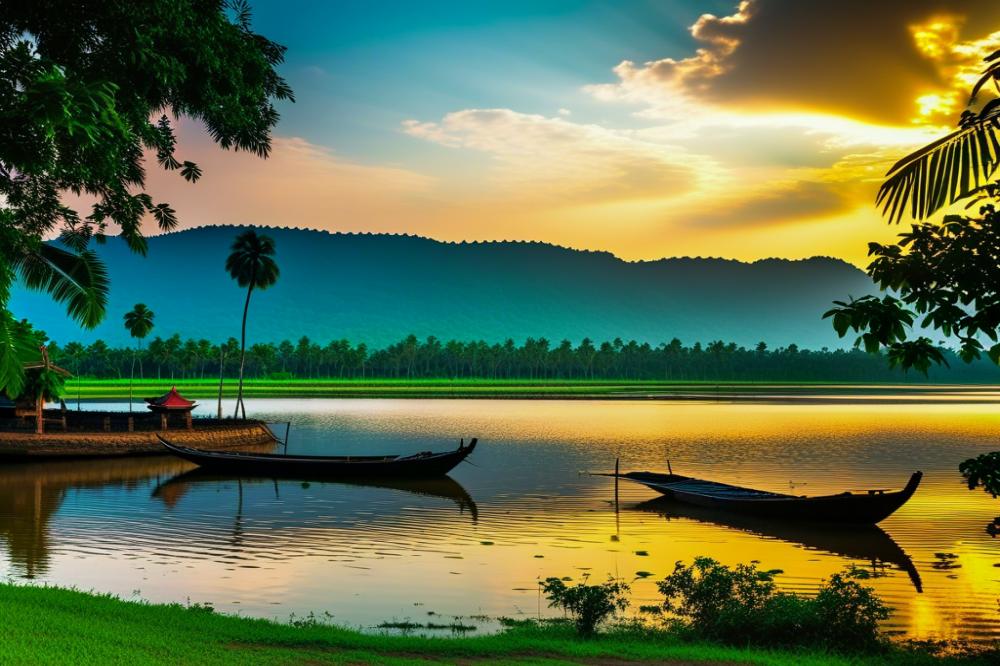Exploring the Cham Culture and architecture of Kampong Cham
Kampong Cham serves as a vibrant travel destination nestled along the Mekong River in Cambodia. This charming province offers both natural beauty and a rich tapestry of history. Visitors encounter stunning landscapes, friendly locals, and an array of historical sites that tell stories of the past. Tourists can explore ancient temples, witness lush rice fields, and stroll along the riverbanks, all while experiencing the warmth of community life.
Within Kampong Cham, the significance of Cham heritage is profound. This unique cultural group, with roots in the Islamic faith, has greatly influenced Cambodia’s history and development. Traditional crafts like silk weaving are practiced diligently by artisans, showcasing skills passed down through generations. Festivals that celebrate Cham Islamic practices draw crowds, highlighting the importance of community and togetherness. Local cuisine tantalizes taste buds with flavors that reflect their rich history and diverse influences.
The purpose of this article is to delve into the essence of Cham Culture and its architectural marvels in Kampong Cham. By highlighting the area’s historical significance, readers will gain a deeper appreciation for its diverse heritage. Knowing more about the traditional arts, religious practices, and significant festivals can inspire visitors to explore and engage with this unique Cambodian experience.
Cham Culture
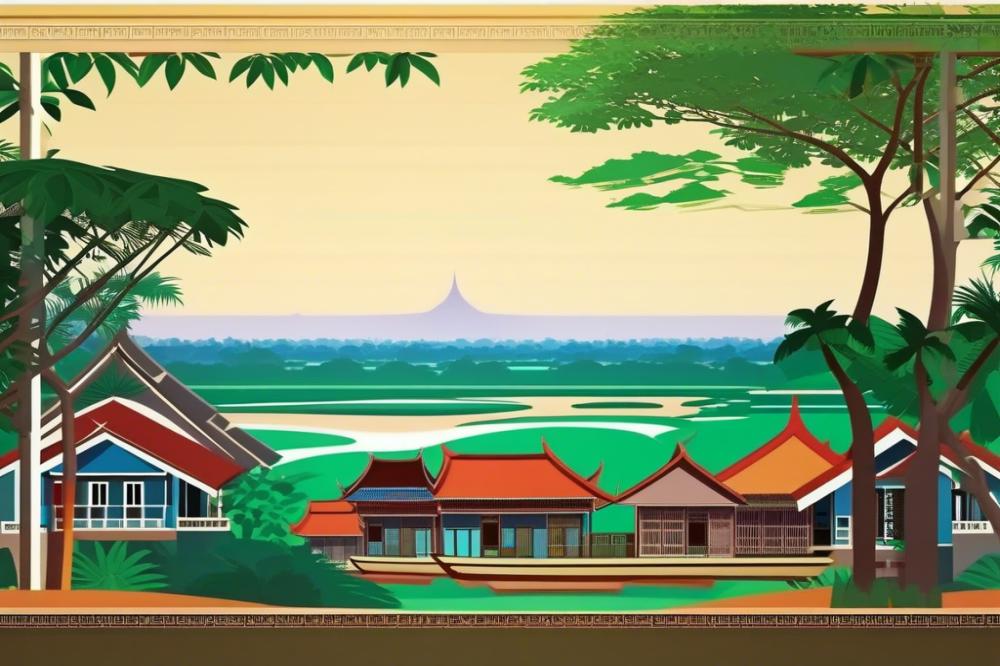
History and origins of the Cham people
The Cham people have a rich history dating back over a thousand years. They originated from the ancient Champa Kingdom, which thrived in what is now central and southern Vietnam. Spreading into Cambodia, they carried traditions that shaped their identity. Invaders altered their land, but the Cham maintained their language and customs. Throughout history, the Cham people experienced various changes, but their roots remained strong. Historical sites around Kampong Cham showcase their enduring heritage. Temples and ruins highlight their architectural brilliance. Understanding their past helps appreciate their present.
Key beliefs and practices within Cham Islamic traditions
Religion plays a significant role in the lives of the Cham. As followers of Islam, they engage in various rituals that connect them to their faith. Prayer is important and is often performed five times a day. Festivals, such as Eid al-Fitr, unite families and communities in celebration. Traditional crafts reflect their beliefs too, with decorations often featuring Islamic motifs. Silk weaving holds importance as it combines artistry and spiritual expression. Cham Islamic practices focus on respect and charity, creating bonds among community members. Family gatherings strengthen these values and reinforce their way of life.
Role of community and family in Cham lifestyle
Community ties are vital for the Cham. Social gatherings foster a sense of belonging and support. In this culture, family is the cornerstone of social life. Families often gather during cultural festivals, sharing delicious local cuisine. These occasions create lasting memories and foster unity. The importance of mutual aid within the community cannot be overstated. Traditional crafts are often passed down from generation to generation. Young Cham learn the skills of their ancestors, ensuring cultural continuity. Social structure emphasizes respect for elders, reinforcing values that keep the community strong.
architecture
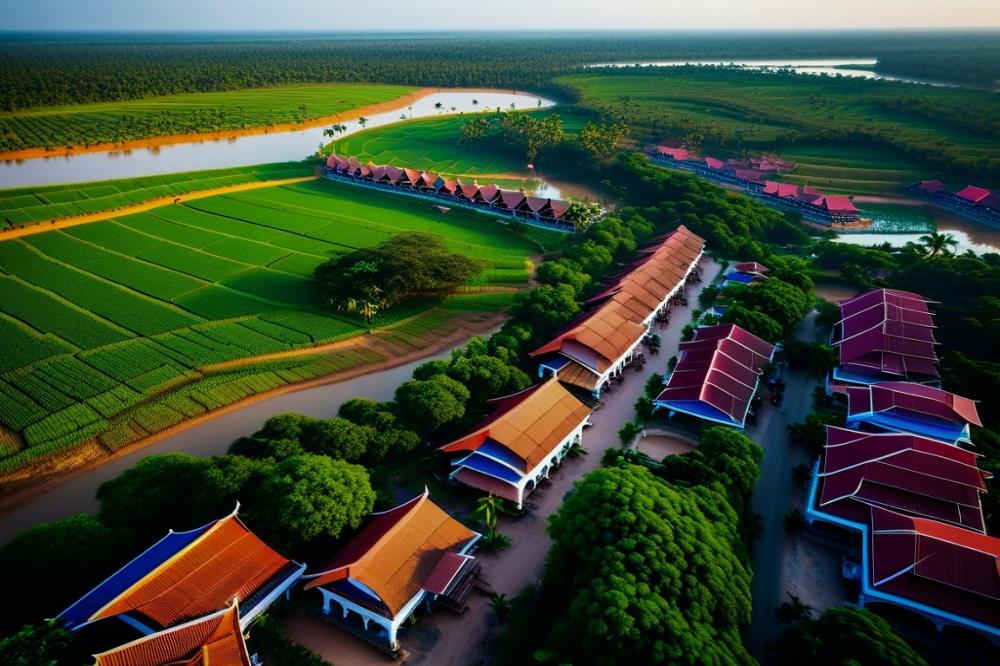
Description of traditional Cham architecture
Traditional Cham architecture reflects the rich heritage of the community. Influences from various periods can be seen in their structures. Houses often feature wooden beams with intricate carvings. Roofs are usually steep and gable-shaped, showcasing functional and aesthetic designs. Additionally, the use of natural materials like bamboo and palm leaves is common. These elements come together to create spaces that are not only livable but also tell stories of the Cham people’s past.
Significance of historical sites in Kampong Cham
Kampong Cham is home to several historical sites that hold great importance. Ancient temples and mosques serve as reminders of the region’s diverse cultural practices. Each structure reveals insights into the daily lives and beliefs of the Cham people. Visiting these places often sparks curiosity and appreciation for local customs. Some sites even host cultural festivals, allowing visitors to witness vibrant traditions firsthand. This connection to history strengthens the community’s identity and pride.
Influence of Islamic design in local structures
Islamic design has significantly influenced local architectures. The distinct arches and ornate motifs found in many buildings point to this influence. Cham Islamic practices meld with traditional Cambodian styles, creating a fascinating blend. Colors and geometric patterns often adorn walls, reflecting beliefs and spirituality. Places of worship, particularly mosques, are prime examples of this unity between faith and art. Community gatherings often take place within these spaces, highlighting their role in social life.
Silk weaving remains a celebrated craft among the Cham people. Artisans showcase their skills through vibrant textiles, which are integral to local cuisine and cultural attire. Each piece tells a story, connecting generations through craftsmanship. When exploring Kampong Cham, one cannot overlook the significance of these traditional crafts as they emphasize the area’s values and heritage.
Traditional Crafts
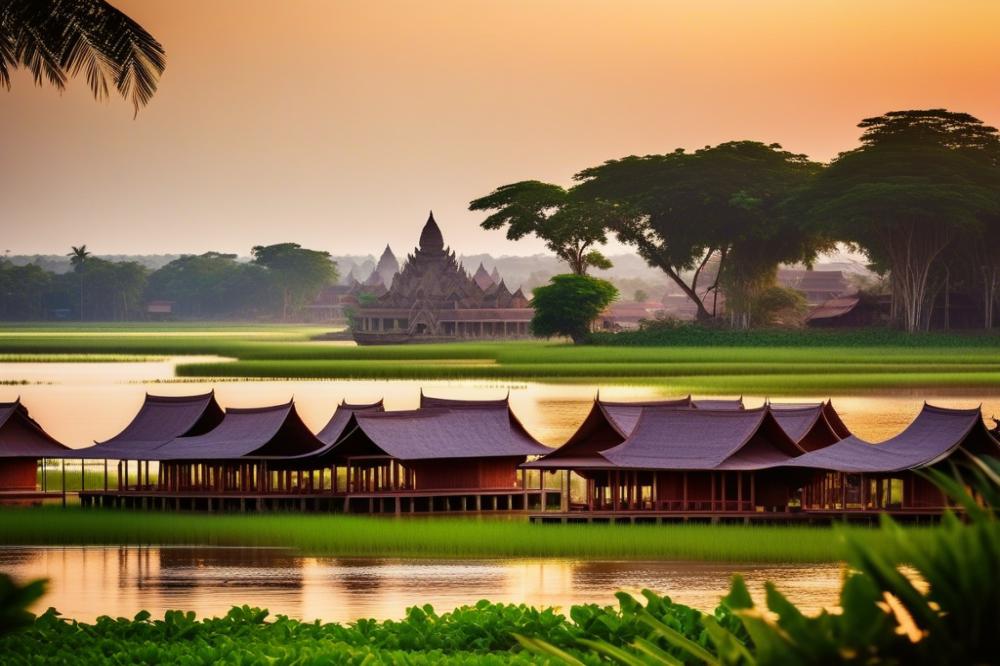
The Cham community possesses a rich tradition of craftsmanship that reflects their identity and beliefs. Art forms within this culture serve as a window into the past, showcasing both skills and creativity. Among these crafts, silk weaving stands out, not only for its beauty but also for its deep cultural significance.
Craftsmanship and Art Forms
Silk weaving is more than just a craft; it’s a vital part of Cham heritage. The vibrant patterns often tell stories or represent religious symbols, connecting the weaver to their Cham Islamic practices. Each woven piece is a labor of love, requiring patience and dedication. Community members gather to share techniques, ensuring that knowledge gets passed down through generations. This bond strengthens their community ties, making silk weaving a source of pride.
Cultural Significance of Silk Weaving
The significance of silk weaving extends beyond economics; it plays a role in cultural festivals. Beautifully crafted garments adorn participants during major celebrations. They celebrate their identity while honoring traditions. Wearing handwoven silk not only showcases artistry but also reinforces a sense of belonging. Local cuisine often accompanies these festivities, making events vibrant and engaging.
Other Traditional Crafts
Alongside silk weaving, the Cham people are skilled in various crafts. Pottery and basket weaving are common expressions of their artistic flair. These items often feature intricate designs inspired by nature and everyday life. Historical sites in Kampong Cham often showcase these crafts, highlighting their enduring importance. Such crafts contribute to the local economy, helping families sustain themselves while preserving cultural practices. The blend of utility and beauty in these works ensures that each piece tells a story.
Religion and Festivals
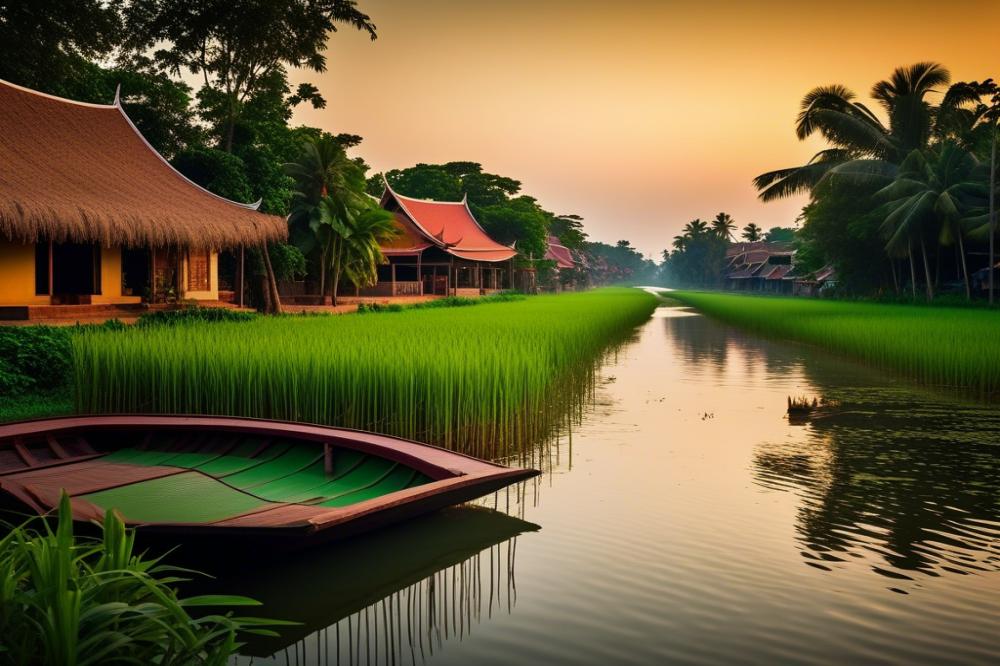
Overview of Religious Practices Among the Cham People
The Cham people have a rich tapestry of beliefs rooted in their heritage. Religion plays a vital role in daily life. Many Cham practice Islam, specifically following Cham Islamic practices. This faith shapes their values and community interactions. Respect for elders is a common theme in their teachings. Moreover, they maintain traditions passed down through generations. Mosques often become centers for prayer and communal gatherings, reinforcing their sense of unity.
Cultural Festivals Celebrated in Kampong Cham
Cultural festivals in Kampong Cham bring the community together. One prominent event is the Hari Raya celebration, marking the end of Ramadan. Families gather for prayer and to share delicious local cuisine. Silk weaving showcases their skills during festivals, highlighting traditional crafts. Another celebrated festival is Bon Om Touk, which involves water celebrations. These festivities include boat races and vibrant markets. Each festival reflects the rich cultural fabric of the Cham.
Interplay Between Religion and Community Life
Community life thrives through religious observance. Beliefs foster a strong sense of belonging among the Cham. Every gathering reinforces friendships and cultural ties. Architecture of their mosques showcases beauty and tradition, blending with nature. Shared meals during festivals often symbolize gratitude and togetherness. Through these interactions, values spread from one generation to the next. The festivals illuminate the importance of faith in shaping their identity. Religious practices harmonize with everyday activities, creating a vibrant community spirit.
Local Cuisine
Exploring the culinary traditions of the Cham people reveals a world rich in flavor and history. Food plays a crucial role in their culture, often linked closely to their heritage and daily life. One bite of a traditional dish connects visitors to the stories and customs passed down through generations.
Impact of Geography and History on Local Dishes
The geography of Kampong Cham greatly influences its cuisine. Proximity to the Mekong River provides access to fresh fish, while fertile land allows for rice cultivation. Historical exchanges with neighboring cultures have introduced new ingredients and cooking techniques over centuries. As a result, the local diet is a blend of influences, reflecting the area’s diverse past.
Popular Foods to Try While Visiting Kampong Cham
While in Kampong Cham, tasting local foods is a must. One popular dish is nom banh chok, often served for breakfast. This rice noodle dish, topped with herbs and fish sauce, is both refreshing and satisfying. Another favorite is amok, a coconut milk curry that showcases the region’s culinary creativity.
Sweets are also significant in the local food scene. Banh cuon, steamed rice rolls filled with shrimp or pork, exemplify the delicate flavors of Cham cuisine. Do not forget to savor the local rice wine, a staple at community gatherings and celebrations. Each dish tells a story, offering insight into Cham Islamic practices and community values.
During cultural festivals, food takes on a central role in celebrations. Traditional crafts, including silk weaving, often find their way into these events too. The connections between food, architecture, and community are evident in every shared meal.
Visiting Kampong Cham without indulging in its local cuisine would mean missing out on the essence of the Cham people. The flavors and aromas invite exploration and invite visitors to embrace the cultural richness of the area. Each meal shared offers a deeper understanding of this timeless heritage.
Final Thoughts on Cham Culture and Architecture in Kampong Cham
Exploring the Cham culture and its architecture in Kampong Cham reveals a rich and fascinating history. This heritage is not just a relic of the past; it is a living part of the community. Visitors can experience vibrant traditions, from traditional music to colorful festivals. An exploration of local crafts also showcases the talents of these artisans. In this place, every structure tells a story, making each visit more meaningful.
Travelers seeking something special should consider a visit to this region. Unique experiences await those who walk the streets and interact with the local people. Friendly smiles and warm welcomes create a connection that enhances any journey. Take the time to taste local dishes and attend cultural events. Each moment spent here can provide insights into a way of life that is both beautiful and soulful.
Preserving the Cham legacy is vital for future generations. As globalization spreads, traditional ways of life may fade. Supporting local culture through tourism helps maintain this rich history. It is essential to respect and learn from these traditions. Doing so ensures that the Cham people can share their stories with the world.
Ultimately, a journey to Kampong Cham is more than sightseeing. It is an opportunity to engage with a culture that has weathered many storms through history. Every visit contributes to the vitality of this unique heritage. Remember, by respecting their customs and supporting their artisans, travelers play a part in keeping this culture alive.

